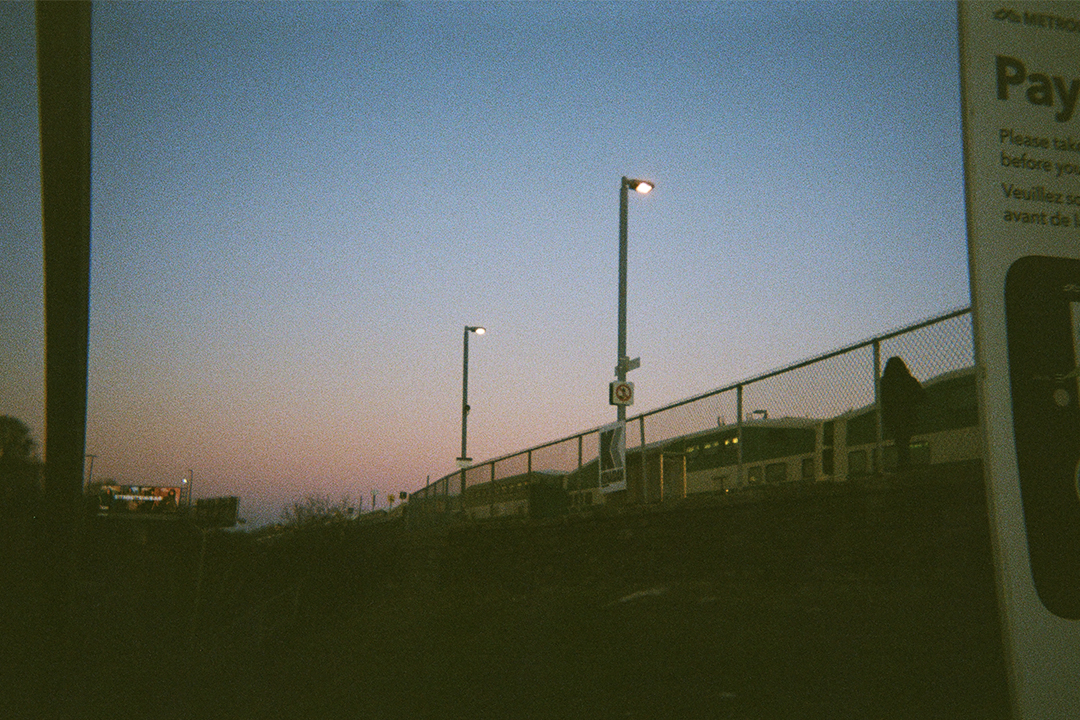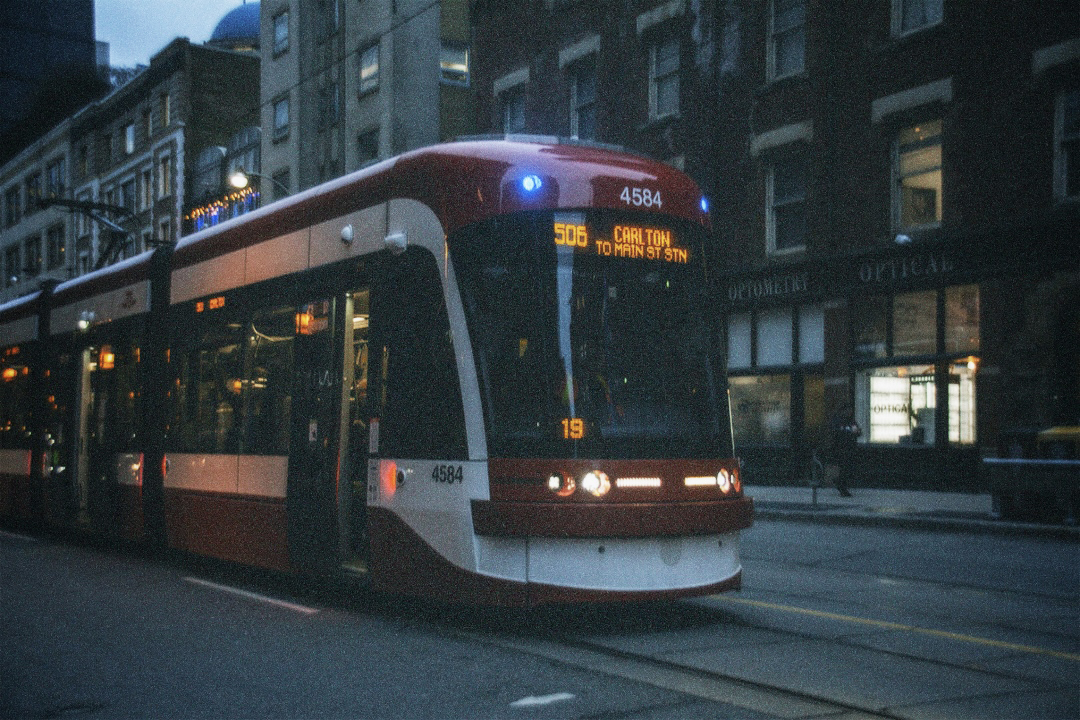If you’re starting school in a city where the majority of students rely on public transport as their primary travel mode, getting familiar with our transit system is crucial. Hence, allow me to introduce you to the Toronto Transit Commission (TTC)! Once you set foot on a TTC vehicle, you are setting foot on a transit system with an average weekday ridership of over two million passengers. The TTC — which operates the public subway, streetcar, and bus — is also on the top ten list of public transit systems in the world for convenience and efficiency.
Still, I don’t blame you if you have been scared by reports in the past several months on the stories of unprovoked attacks and threats on the TTC. In early 2023, it seemed as if the TTC’s violent incidents were spiralling out of control. Even as an avid streetcar user, I would be lying if I said I was not avoiding the TTC for a while, following the stream of violent events.
Fortunately, as of June, violent incidents against TTC customers have seen a sharp decrease from January’s numbers. Even though our fears can easily be amplified when reading the news, the reality is that most of the crowd of millions of people on the TTC are being safely delivered to where they need to go on a daily basis. I also dare hope that the newly elected mayor of Toronto — in tandem with our city’s councillors — will pay sufficient attention to address the root causes of public transit violence.
Given this, here is a breakdown of everything you need to know before making your way through Toronto on the TTC.
Ticket to ride: PRESTO

While you can use the TTC by buying single-fare tickets for $3.35 every time you use the transit, buying a PRESTO card makes your life infinitely easier — as long as you don’t lose it.
The most convenient places to buy a PRESTO card are either your local Shoppers Drug Mart or the fare vending machines at every TTC subway station. Once you pay $6 for the card, you can load it at any of those places or via the PRESTO app on your phone.
In terms of fare, you either have the option of paying as you go — for which you pay $3.30 per ride — or purchasing the TTC monthly pass. For post-secondary students like us, TTC offers a discounted monthly price of $128.15 that allows you to tap away anywhere and at any time.
Once you have your card loaded, you’ll now have your ticket to ride on the TTC, GO Transit, UP Express, and many other transit agencies within the province.
The streetcar

I am a devoted fan of these red-and-white beauties, which stroll through eight different lines: 501 Queen, 504 King, 505 Dundas, 506 Carlton, 509 Harbourfront, 510 Spadina, 511 Bathurst, and 512 St. Clair.
Many of my friends and I board the 510 Spadina most often because it runs from U of T through where many students reside or visit: Kensington, Chinatown, Harbourfront, and Union Station. Except under horrible weather, streetcars are mostly on time and convenient. The 501 Queen, which provides a scenic ride through Toronto with the longest streetcar route in North America, is currently diverting to its regular routes via McCaul Street, Dundas Street, and Broadview Avenue for the Ontario Line construction. There are also additional buses available: westbound buses run from Broadview Avenue on Richmond Street, while eastbound buses run from Bathurst Street on King Street.
All TTC streetcars have low floors for accessibility and have the blue International Symbol of Access attached on the side. If you may benefit from the accessibility entrance and ramp, you can press the flashing blue button on the second door of the streetcar when boarding. You can press the same button before you get off the streetcar and the ramp will deploy. All the while, operator assistance is available if you use a manual wheelchair.
The subway
The option that most U of T students select for convenience is the TTC’s subway. While you unfortunately won’t have cell service underground, the subway is fast and connected with the most accessible stations on the St. George campus: Queen’s Park, Museum, Spadina, and St. George, which are all on Line 1: Yonge-University.
With three other lines — Bloor-Danforth, Scarborough, and Sheppard — the TTC subway operates from roughly 6:00 am to 2:00 am the next morning during weekdays and Saturdays, and 8:00 am to 2:00 am on Sundays.
While operator assistance is not provided, every accessible subway car has one allocated position for wheelchairs with a flip-up row of seats and emergency alarm strip handles positioned for ease of access. Unfortunately, cars on the Scarborough line do not yet have wheelchair positions but provide level boarding.
TTC buses

Although I’d like to say that streetcar and subway delays are rare, there are unexpected moments that force you to walk in late to a full class. In these particular circumstances, the TTC bus system will be your saviour. With over 190 routes across the city, TTC buses allow free transfers for you to hop between them and streetcars and subways.
The bus will also come to rescue you when you walk out of Robarts Commons at times closer to sunrise. The late-night bus service, dubbed the Blue Night Network, has major bus routes running from 1:30–5:00 am. You can find which routes will get you home during those instances on the TTC website’s routes and schedules page.
There are accessible low-floor buses with ramps on all TTC bus routes, and anyone who may benefit from the ramp can directly ask the bus’s operator to get help boarding the bus. You also have the option of obtaining a blue Accessible Flashcard via TTC Customer Service at 416-393-3030, which you can show the driver when the bus slows down.
Extra tips, just in case
I am not a fan of advising anyone that one or two tips will magically keep them safe in the TTC. Still, there is wisdom in conventional advice, and it doesn’t hurt to follow it. Below are some general tips I want to share that I learned from others and my personal experience.
I love listening to my carefully curated music playlists wherever I go, but there are times when I end up sitting too close to physical altercations among passengers because I can’t hear the noise. Keep your music volume down, and always be aware.
Don’t be scared to make use of the ability to request an unscheduled stop. If you are on a bus between 9:00 pm and 5:00 am, and feel uncomfortable or vulnerable at any moment, you can request to exit through the front door between regular bus stops.
Some personal advice: on streetcars, I always try to sit closer to the front, where the driver is. There is no substantial statistical data to back this up, but I always feel better seen and safer up front.
With these tips in mind, I would also advise you to relax a bit and have fun with our city’s TTC! At the end of the day, there are over a million Torontonians safely getting through their days through the streetcars, subways, and buses. The system has its flaws, but it’s good enough to get you to where you want to be and enjoy your day.
